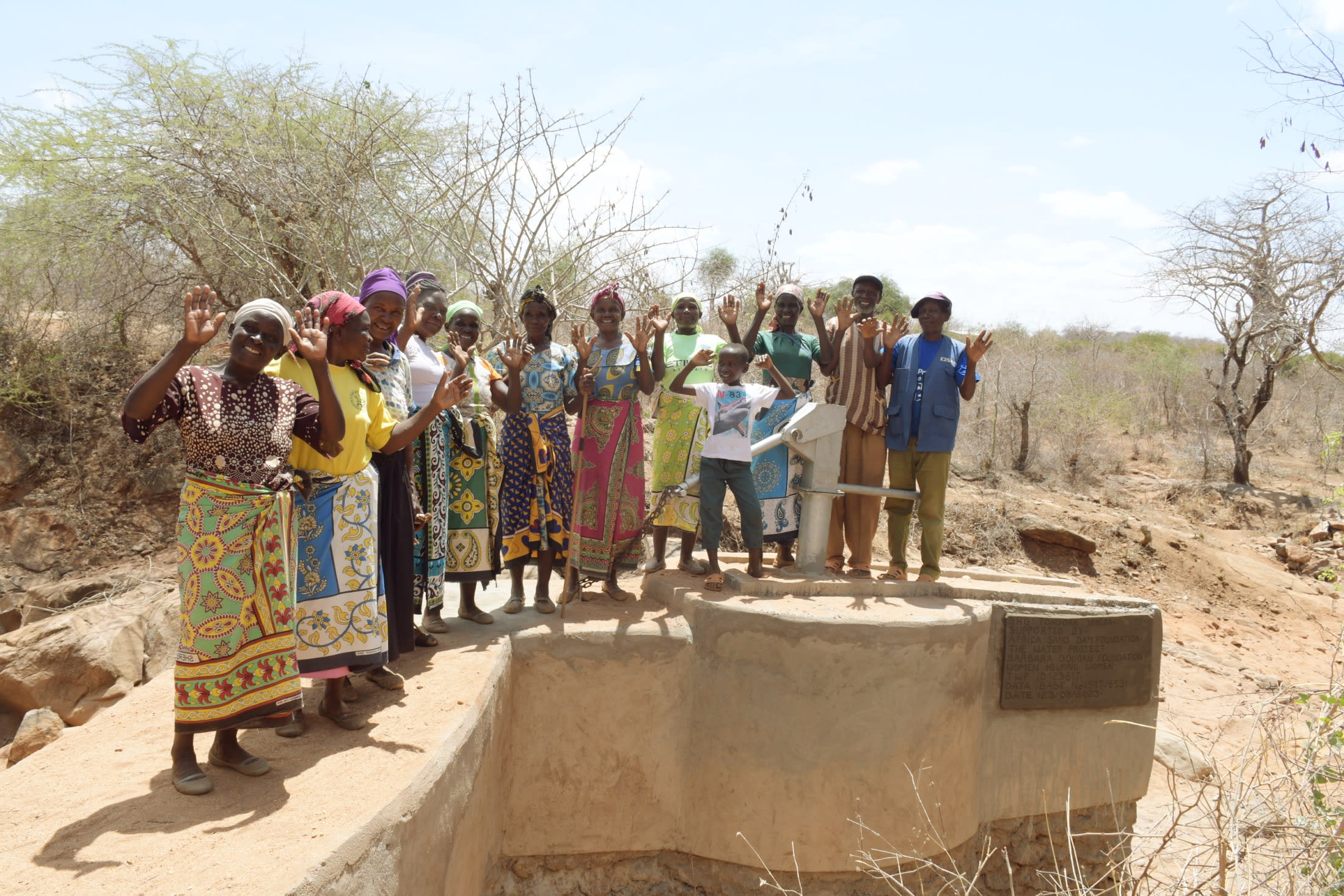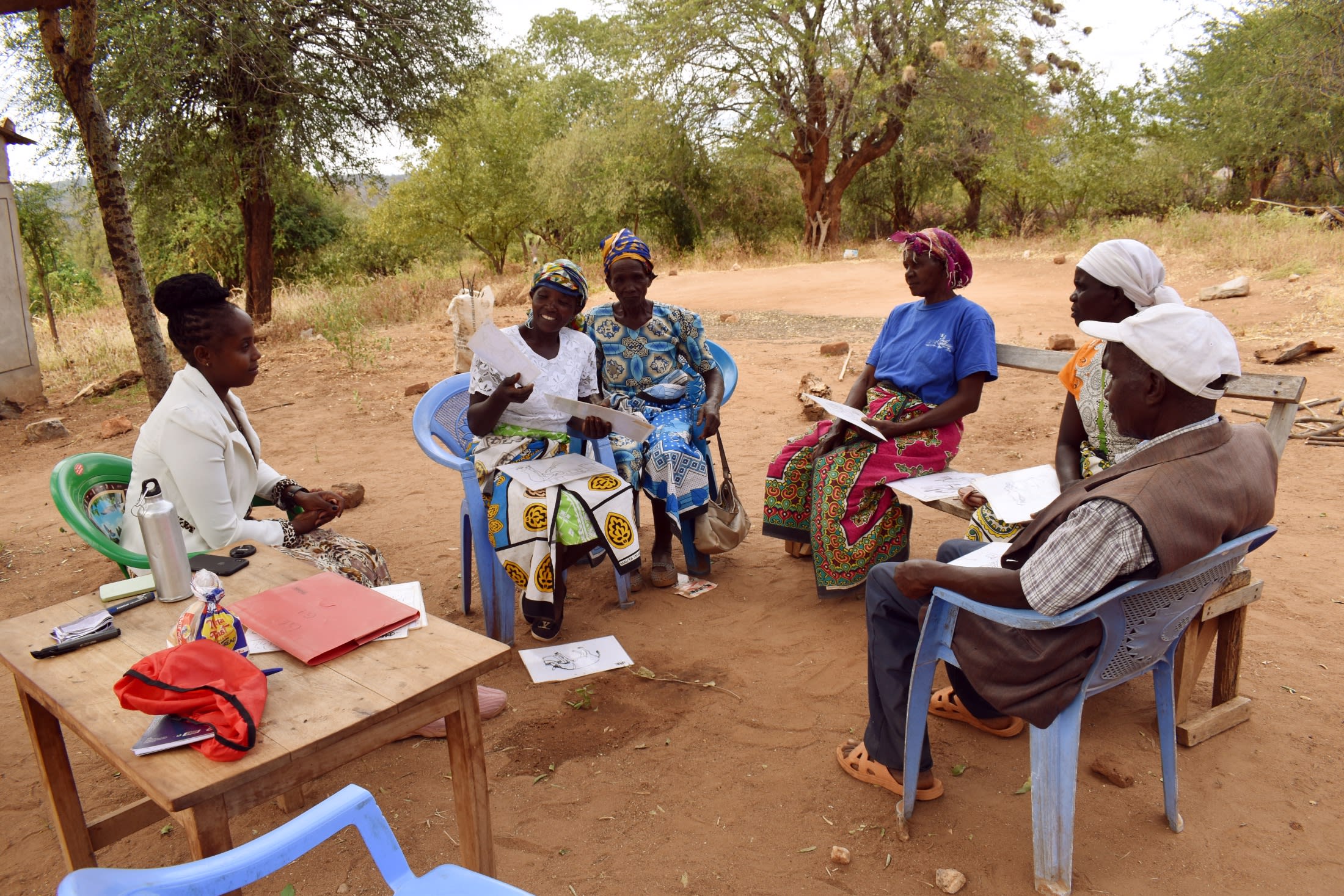The list of problems caused by the water crisis for the 3,000 people in Tondora is seemingly endless.
The closest water source for most of Tondora's people is a river that is four kilometers (2.48 miles) away. When the river dries up, as it does for most of the year in this semi-arid region, people must dig down to reach the brown, salty water beneath the surface of the riverbed. The journey to and from the water source eats up valuable time and energy every single day.
"Most residents spend more than half a day walking to and from the water point (one trip), making it time-consuming and exhausting," said our field officer, Alex. "The scoop holes are located about four kilometers away and cannot satisfy the entire population, which has led to overcrowding at the water point."

"Each morning, I have to carry water to school for drinking and cooking," said eight-year-old Patrick S. (shown above walking across the dry riverbed to a scoop hole). "I get very exhausted from the journey and cannot properly concentrate in class. Yesterday, I was late to school because the weight of the jerrycan slowed me down."
If people can afford donkeys, they load jerrycans onto their backs to fetch more water than they could carry on their own backs. But this also means that the entire riverbed is dotted with donkey excrement, seeping through the layers of earth to contaminate the water. It isn't surprising, therefore, that this disgusting water infects people with all sorts of diseases.

"Fetching water in the morning is energy-draining, and I get too exhausted to properly care for my goats or prepare my land in case the rain comes," said 55-year-old farmer Syombua Muthui (shown above and below).

"Conducting personal or household hygiene and sanitation is difficult because I have to use water sparingly," Syombua continued. "I have often contracted typhoid and amoeba, which are expensive to treat, considering my meager income. There is also insufficient water to irrigate any of my crops or vegetables, forcing us to settle for one meal per day."
As Syombua said, the little water Tondora's people are able to collect has to be prioritized and rationed. But this means things like washing dishes, laundering clothes, and cleaning latrines aren't done very often, exacerbating everyone's health issues even further.
'Water-washed' water contamination decreases with increased quantities of water. Ailments like 'infections of the intestinal tract, skin or eye infections, and infections caused by lice or mites' go away once households have better access to water. (Water, Engineering, and Development Centre - Loughborough University, United Kingdom)
The people of Tondora need a closer water source to alleviate their suffering and help them achieve their goals.
Note: Our proposed water point can only serve 300 people per day. We are working with the community to identify other water solutions that will ensure all 3,000 people in the community have access to safe and reliable drinking water.
What We Can Do:
Our main entry point into this community has been the Self-Help Group, which comprises households working together to address water and food scarcity in their region. These members will be our hands and feet in constructing water projects and spreading the message of good hygiene and sanitation to everyone.
Hand-Dug Well
This particular hand-dug well will be built adjacent to a sand dam project, which will supply clean drinking water once it rains. We have provided the group with the tools needed for excavation. With the guidance of our artisans and mechanics, the excavated well will be cased, sealed with a well pad, and then finished with a new AfriDev pump.
Excavation takes a month or more on average, depending on the nature of the rock beneath. Construction of the well lining and installation of the pump takes 12 days maximum. The well will be lined with a concrete wall including perforations so that once it rains, water will filter in from the sand dam.
This well will bring clean water closer to families.
New Knowledge
These community members currently do their best to practice good hygiene and sanitation, but their severe lack of water has significantly hindered reaching their fullest potential.
We will hold hygiene and sanitation training sessions with the Self-Help Group and other community members to teach essential hygiene practices and daily habits to establish at the personal, household, and community levels. This training will help to ensure that participants have the knowledge they need to make the most out of their new water point as soon as the water is flowing.
One of the most important topics we plan to cover is handling, storage, and water treatment. Having a clean water source will be extremely helpful, but it is useless if water gets contaminated when it is consumed. We will also emphasize the importance of handwashing.
The community and we firmly believe that all of these components will work together to improve living standards here, which will help to unlock the potential for these community members to live better, healthier lives.
We typically work with self-help groups for 3 to 5 years on multiple water projects. We will conduct follow-up visits and refresher training during this period and remain in contact with the group after all of the projects are completed to support their efforts to improve sanitation and hygiene.




 Protected Dug Well
Protected Dug Well
 Rehabilitation Project
Rehabilitation Project



























